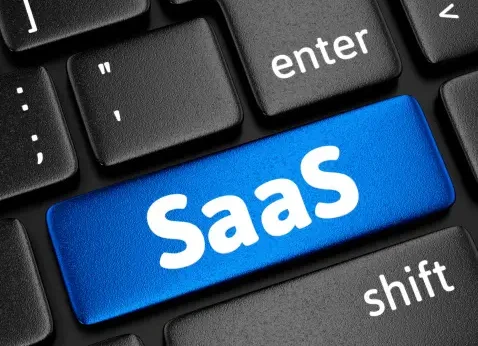No matter how you see the digital era in front of us, a company will always be faced with the decisions of the adoption of software as a service or on-premises systems. Each choice has its unique benefits and drawbacks and affects cost, flexibility, security, maintenance, etc. Knowing them is of great importance for the organizations so that they can make decisions that ensure that they are in line with their own goals and needs.
SaaS (Software as a Service)
- Accessibility
Pros: SaaS apps are available from any place worldwide if there is internet in that place which enables remote workers and extra real-time communication.Scalability: Businesses can easily scale their resources up or down based on the demand without the necessity for the upfront costs, hence, they are well suited for the growing businesses.Rapid
Deployment: Faster deployment lowers the time-to-market and thus improves the agile development process.Cons:Internet
Dependency: Relies on internet which means that if the connection is bad it can negatively impact accessibility and the performance of the application.Customization
Limits: The less customizability compared to on-premises solutions results potentially in the lack of necessary features for the specific task or for the company to perform fully.
Some other pros and cons are as follows :
- Customization Limits: There are some limited customization opportunities with the cloud edition compared to the on-premises edition.www.example.com
- Cost Efficiency: Pros: Lower Initial Costs: Usually, SaaS runs as a subscription model with the first phase costs being reduced through software licenses and hardware that does not need to be bought initially.Maintenance Included: Maintenance, updates and support are typically provided as part of the subscription fee and hence IT overhead is reduced.Cons:Long-term Costs: On one hand, over the course of the subscription, expenses may be rising because of the accumulation of paid fees and other costs but on the other hand, it may have been less expensive than a purchase as value was derived only from use and vendor pricing model with the consumption of software.Data Control: Lack of control over data security and storage location is the main concern regarding compliance and regulatory requirements.
- Lower Initial Costs: Typically, SaaS operates on a subscription model which is known for cost-benefit solutions by greatly cutting the expenditure on hardware and necessary software licenses(Maintenance Included:Maintenance, updates and support are often included in the subscription fee, reducing IT overhead.
- Lower Initial Costs: Usually, the subscription model of SaaS is the one that makes some expenses go directly to hardware and software parts thus lowering the upfront costs.Maintenance Included: Maintenance, updates and support often come with the subscription fee and thus reduces IT overhead.
- Maintenance Included: Maintenance, updates and support are often included in the subscription fee, reducing IT overhead.
- Long-term Costs: Subscription fees can accumulate a higher amount for software purchase if higher time of use and/or cost based vendor models are chosen.Data Control: Loss of control over data reliability and safety, and data allocation is frequent instances where conflicts are seen regarding compliance and regulatory needs.
- Long-term Costs: Over time, subscription fees can accumulate high costs compared to realizing them as upfront purchases, on the grounds that usage and vendor pricing models as variables.
- Data Control: Limited control of data security and storage, which may lead to non-compliance and could be a problem with regulators.


 Impacts of AI on SaaS: The Facts You Should Be Aware Of
Impacts of AI on SaaS: The Facts You Should Be Aware Of  The Top SaaS Project Management Tools for 2024
The Top SaaS Project Management Tools for 2024  How SaaS is Changing the Financial Services Industry
How SaaS is Changing the Financial Services Industry  The Best SaaS Solutions for Automating Business Processes
The Best SaaS Solutions for Automating Business Processes  SaaS in Education: Transforming Learning and Administration
SaaS in Education: Transforming Learning and Administration  Optimizing Your SaaS Pricing Strategy
Optimizing Your SaaS Pricing Strategy